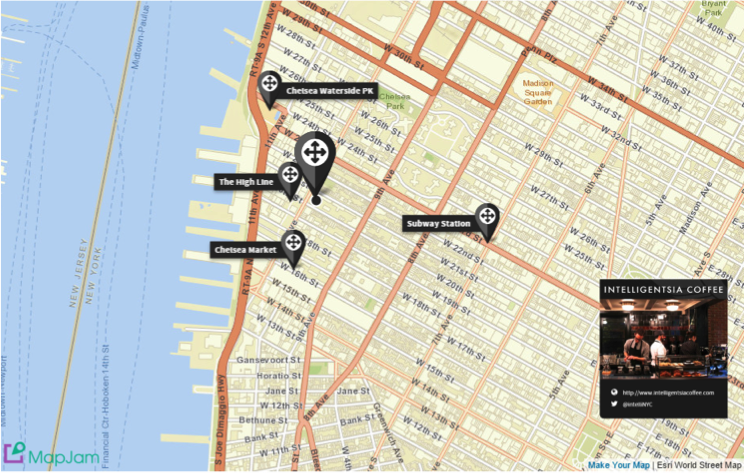5 Best Practices for Location Marketing
Retailers spend a lot of time and money marketing their location(s). They invest in logos, colors, eye-catching signs, employee uniforms, lights — any tangible element that will attract consumers’ attention and lure them inside.
On the internet, however, an online map often serves as the first point of entry to a specific location, and all of that location-based cache can begin to lose its effectiveness and impact the moment a retailer defaults to a standard-fare search engine map to attract visitors to specific addresses.
Why? Because generic search engine maps can expose loyal shoppers and potential customers to a broader pool of options and potentially counterproductive content, including nearby competitors, similar businesses, even negative online reviews from sites like Yelp, Google+, Zomato, Complaints.com and others.
Leaky Location Marketing Funnel? Fix Your Map
Ideal location marketing serves as a multifaceted funnel that shepherds consumers to and through the front door. According to a recent xAd report, 78 percent of marketers use location targeting in their plans. However, the location marketing funnel can begin to leak when it sends consumers elsewhere or exposes them to information that doesn't serve the retailer’s best interests.
Why rely on a readily available search engine map that might also feature similar nearby businesses? Why feature online maps that also give free real estate to competitors? If you're intent on welcoming customers in, why open the door to potentially negative content that might — just for a split second — make shoppers think twice about actually checking out a particular place or stepping inside the door?
Here are some best practices for ideal location marketing in today’s internet-driven world:
- In order to “own” your location marketing, “own” your online map. Many retailers default to search engine maps because they’re unaware of competitive exposure. Some retailers use common search engine maps because map-creation alternatives have been difficult to find or previously required special programming,
 coding or graphic design skills. But today’s retailers now have more options for creating, branding and “owning” their online maps, thanks to easy-to-use online mapping resources and platforms, many of which feature simple-to-use drag-and-drop interfaces that make building a branded map a five-minute experience in sheer locational creativity.
coding or graphic design skills. But today’s retailers now have more options for creating, branding and “owning” their online maps, thanks to easy-to-use online mapping resources and platforms, many of which feature simple-to-use drag-and-drop interfaces that make building a branded map a five-minute experience in sheer locational creativity. - Once a retailer has chosen a non-search engine mapping resource, the primary focus should be on branding the map. Add retailer-specific logos, colors, taglines and details. Make the online map a seamless extension of your website, including the same look and feel, colors and branding.
- Use the map to showcase information that’s important to your brand, not what’s readily available online. Choose a mapping alternative that supports photos, videos and nearby locational pins that can provide additional context — e.g., where to park, the nearest public transit stop, points of interest, retail partners, nearby connected buildings/services, etc. Feature your own customers’ testimonials and reviews, not content from third-party sites outside of your control (where originality and authenticity are often suspect).
- Share the fully owned online map readily and easily across numerous online and social channels, including Facebook, Twitter, text message, your own website, Weebly sites, Pinterest, LinkedIn, QR code, WordPress plug in, and more.
- It’s no secret that today’s shoppers increasingly search for retailers on smartphones and mobile devices. Therefore, make a retail map mobile friendly and helpful at the same time across all shopping and showrooming channels. Give consumers more reasons to check out a specific location by featuring amenities, services and extras that make one location more attractive than others.
Retailers intent on making the most of location marketing, especially in today’s internet- and mobile-driven e-commerce marketplace, should place as much emphasis on owning and branding their online maps as they do on investing in catchy logos, lights and signs.
Retailers that claim sole ownership of their online map are proving they know how to “own” the brand — not cede it to others.
Jack Gonzalez is co-CEO of MapJam, a mapping platform that enables users to create customized, easily shared online maps by adding dynamic content, media and branding.












